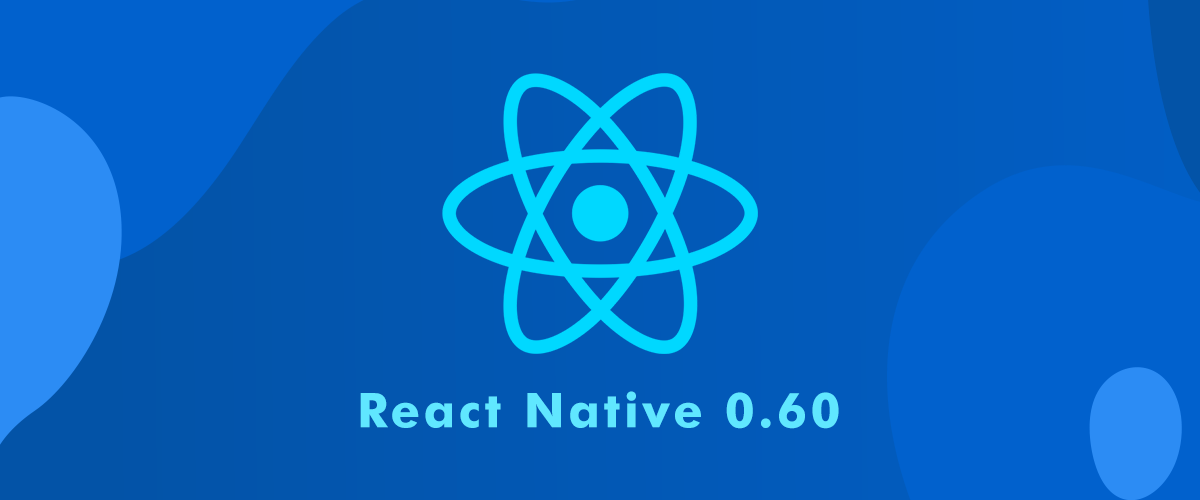
Facebook recently introduced the latest version of React Native labeled Version 0.60. Months of perspiration and hard work by the React Native App Developers have enabled Facebook to launch the final product that is both enthusiastic and curious. It has also been received very well by the users and developers. The best part about it, as usual, is the upgraded characteristics to make things easier for users. Of course, the highlight is the fact that the fresh version mixes the Cocoa Pods into it, making a powerful, extensive case of mixing the iOS project of React Natives. There's also some squeezing out on the other end of the spectrum. The Web View and Net Info no longer remain a part of React Native’s repository.
For portable cross-platform apps, React Native is extremely preferred. It’s also known as React Native for Mobiles when developing Android, Windows and iOS applications. React Native is capable of providing web based solutions to its users as well. It is known for saving time and thus providing a cost-effective solution to the growth of mobile apps – lowering costs by up to 50%. React Native’s recent update comes with enhancements inaccessibility, iOS CocoaPods, renewed start screen, and lots of other things. React Native is also an open-source framework that distinguishes itself from its primary version. Talking about functions, the React Native App Developers are able to actively run JavaScript written in the background. This upgrade may be used by 0.59 for all users currently engaging the React Native.
React Native App Developers who were confronting some of the other problems with the past versions can now make the most of the recent version as it comes with simple fixes. The issues and failures of 0.59 are no longer there and thus users can get a consistent experience with the optimized version to improve the output of React Native app development.
1) Improved availability: In terms of an open-source mobile application framework, this latest version is truly path-breaking. Both the mobile app development platforms–Android and iOS –have a lot of accessibility API enhancements. It comes with the capacity to use native support technologies to integrate platform-specific APIs. There are more improvements with React Native 0.60 on the accessibility front including the following:
a. Accessibility flag assistance and decreased motion for iOS. This implies that you can easily create cross-platform iOS applications with accuracy in less time.
b. Inclusion of many missing roles for various components to effectively use it depending on the demands.
c. Addition of on Click call back and a clickable prop. This helps to request actions through the navigation of the keyboard.
d. Enhancing web assistance with the availability of the latest accessibility statements API in the future.
e. Maximizing accessibility actions to add call-backs to handle accessibility of user-specific functions.
The 0.60 release also presents significant changes for both the iOS and Android platforms in terms of API accessibility. There is a list of improvements involving aspects such as advances in supporting action, announce for accessibility, flags and roles to name a few.
2) Backing Android: React Native migrates to AndroidX (Android Extension Library) and this will have significant implications for those who wish to develop cross-platform Android apps. This is because the native codes and dependencies also need to be migrated by the developers. Such a change requires to React Native applications to use AndroidX on their own. Despite the need for developers to change their own native code, this tool is useful to patch all node modules. This update is inherently necessary for all of these library maintainers. However, using the Jetifer tool together with the recent Native React 0.60 will assist launch a fresh version of AndroidX. Therefore, if you find any errors with AndroidX, it's best to consider this.
Migration is easy for Android developers through React Native. This is because AndroidX too is an open-source project that helps to map original support library API packages to the AndroidX namespace. Now here’s where developers need to make a choice as the latest version of React Native won’t allow using AndroidX with the old support library.
3) The Removal of lean core: The placement of Web View and Net Info provides a shift with React Native 0.60. Both are now entering the distinct repositories. Not only are both removed from the React Native repository, but they are also separated from their geolocation. This change is based purely on the feedback received over a period of time from the community. React Native offers a better decision when picking up an open-source mobile application framework. This is due to the popularity that React Native has gained over a short span which is pure due to its performance. In addition, in terms of efficiency, it is to be assumed that React Native 0.60 will save more than half of the time due to lean core removal. The development of cross-platform apps for iOS and Android continues unaffected as these will stay the same as the agnostic platform. With the achievement of the Lean Core Project, React Native repository is in a favorable situation. The all-new React Native 0.60 completes the much-anticipated migration to comply with the new regulations of the App Store as Geolocation is eliminated as well.
4) A New and Fresh Start Screen: Finally, the much-debated new screen is here with the latest version of Native React 0.60. This one comes with the latest app screen that is sleekly designed to offer a much better user-friendly experience. Things are simplified for developers, as all the necessary instructions for documentation linkage, starting the debug menu, and even editing App.js is present on the Start screen. It demonstrates your project aligned with the imminent website design for the growth of internet apps. This implies designers can now obtain the guided path for any redesign and alignment of the potential website. The UI is called 'Hello World', which helps users get to know and make the most of the whole React ecosystem.
5) Auto-link IOS and Android: So far, the developers are used to understanding the React Native libraries which are affected only by the indigenous or platform-specific libraries. But, with this new release, the auto-linking mechanism offers to use the code, by discovering it for the current project. In addition, improvements are being made in the Auto-Link at the indigenous CLI front of React. The team responsible for rolling out the React Native CLI also introduced the main improvements for connecting the indigenous module. Such auto-linking does not allow developers to use the react-native link even if they have maximum conditions.
6) CocoaPods for iOS: CocoaPods are here in the form of the app-level reliance manager. This is specifically for iOS as with Swift CocoaPods and Objective-C, CocoaPods come by default. Using this recent version, developers will need the xcworkspace file to open and use the iOS platform code. Pod specifications are also updated for internal packages so they are now compatible with Xcode projects. This helps developers to easily debug and fix problems with the development of iOS apps.

About the Author:
B.Eng., MBA, PMP®
I’m Krunal Vyas, IT Consultant at iQlance Solutions. Is one of the name of website and Mobile app Development, I’ve helped more than 250+ Clients to build meaningful mobile apps and website. Call me today for FREE CONSULTATIONS:
Have a look at the services and development process of the iQlance solution. See What process we follow for mobile app and software development. Have a look at how we are praised by our clients Start a conversation to innovate your next great idea into reality with us.